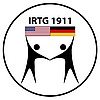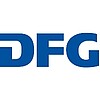A5 (2016 - 2019) – The role of transcellular and paracellular migration of neutrophils on the pathogenesis of clinical and experimental asthma
Allergic asthma is a complex disease which involves many cell types and tissues. Instructed by signals derived from mast cells and the affected tissues, inflammatory cells like neutrophils have to cross barriers such as the endothelial and epithelial cells to invade the inflamed lung. The process of transmigration may have significantly consequences concerning cell activation for both, the transmigrating neutrophil as well as for the transmigrated barrier. Classically, neutrophils cross cellular barriers by opening tight junction between individual cells (paracellular transmigration). Experimental evidence from our labs demonstrate that hyperactive neutrophils are prone to transmigrate via a transcellular route, a mechanism where cells pass directly through the barrier cells. Furthermore, deficiency of the small GTPase RAP 1b in neutrophils is associated with an increased infiltration of these cells in the lung during endotoxin shock. Unexpectedly, RAP 1b-/- neutrophils migrate through endothelial barriers predominantly by a transcellular migration. This process involves the increased release of matrix-degrading proteases and the formation of cellular protrusions. Importantly, RAP 1b-/- mice exhibited increased lung inflammation and susceptibility to endotoxin shock in vivo, suggesting an association between neutrophil hyperactivity, transmigration route and inflammation outcome. Based on these observations, we hypothesize that transcellular migration of neutrophils through airway epithelial cells enhances airway inflammation by increased damage mediated by neutrophil proteases as well as by functional changes of the epithelium leading to goblet cell hyperplasia. We postulate that these processes are triggered by mast cell proteases.
Aims:
1. Determination of genetic and inflammatory signatures of lung epithelial cells after para- and transcellular transmigration of neutrophils
2. Characterization of the phenotype of neutrophil subsets recruited via the protease-dependent transcellular and the protease-independent paracellular pathway
3. Analyses of the contribution to neutrophil subsets and differentially transmigrated epithelial cells to the asthma phenotype
4. Analyses of RAP 1b signaling and transmigration in neutrophils derived from patients with severe/neutrophilic asthma







